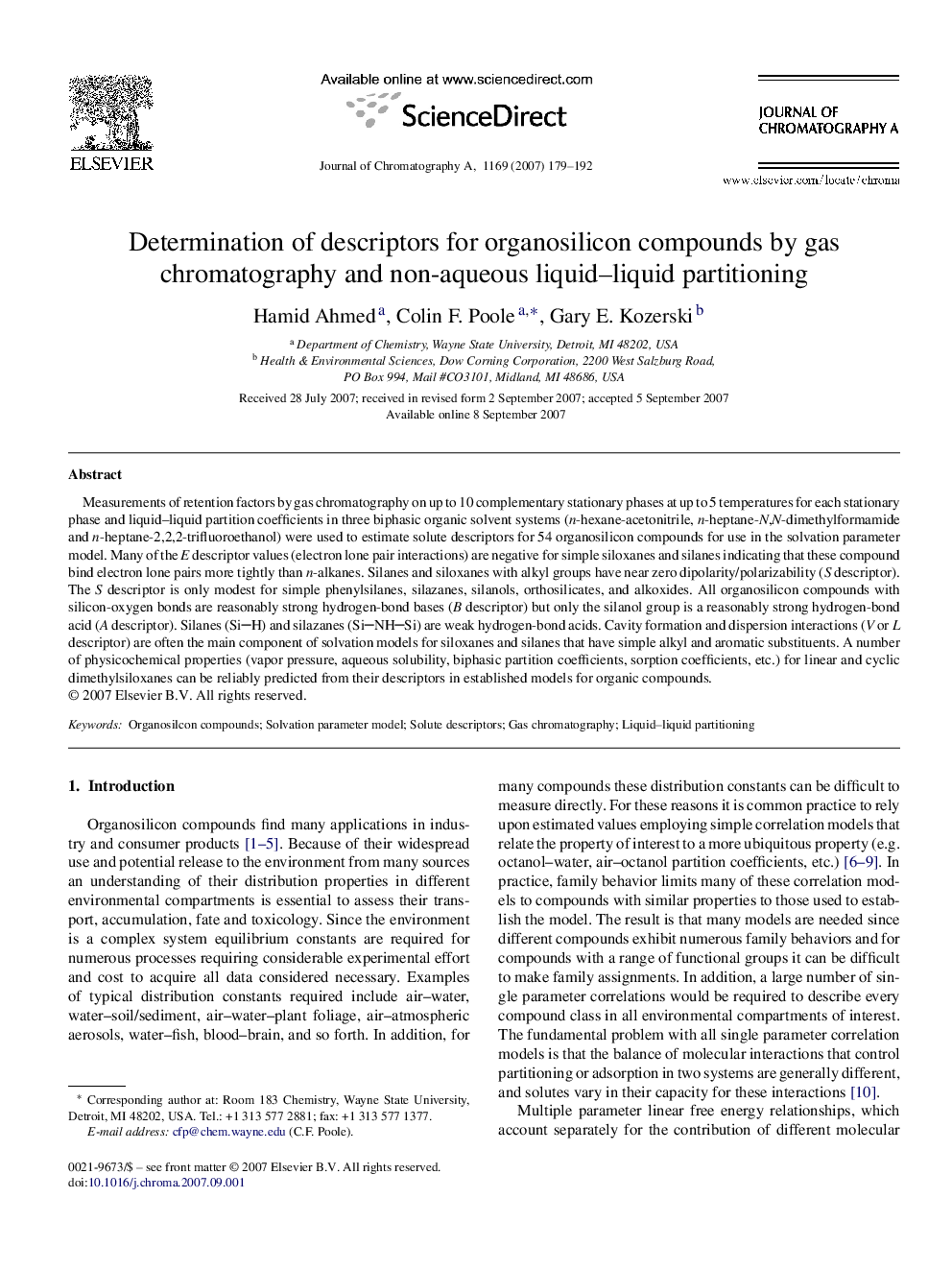| Article ID | Journal | Published Year | Pages | File Type |
|---|---|---|---|---|
| 1211099 | Journal of Chromatography A | 2007 | 14 Pages |
Abstract
Measurements of retention factors by gas chromatography on up to 10 complementary stationary phases at up to 5 temperatures for each stationary phase and liquid-liquid partition coefficients in three biphasic organic solvent systems (n-hexane-acetonitrile, n-heptane-N,N-dimethylformamide and n-heptane-2,2,2-trifluoroethanol) were used to estimate solute descriptors for 54 organosilicon compounds for use in the solvation parameter model. Many of the E descriptor values (electron lone pair interactions) are negative for simple siloxanes and silanes indicating that these compound bind electron lone pairs more tightly than n-alkanes. Silanes and siloxanes with alkyl groups have near zero dipolarity/polarizability (S descriptor). The S descriptor is only modest for simple phenylsilanes, silazanes, silanols, orthosilicates, and alkoxides. All organosilicon compounds with silicon-oxygen bonds are reasonably strong hydrogen-bond bases (B descriptor) but only the silanol group is a reasonably strong hydrogen-bond acid (A descriptor). Silanes (SiH) and silazanes (SiNHSi) are weak hydrogen-bond acids. Cavity formation and dispersion interactions (V or L descriptor) are often the main component of solvation models for siloxanes and silanes that have simple alkyl and aromatic substituents. A number of physicochemical properties (vapor pressure, aqueous solubility, biphasic partition coefficients, sorption coefficients, etc.) for linear and cyclic dimethylsiloxanes can be reliably predicted from their descriptors in established models for organic compounds.
Related Topics
Physical Sciences and Engineering
Chemistry
Analytical Chemistry
Authors
Hamid Ahmed, Colin F. Poole, Gary E. Kozerski,
